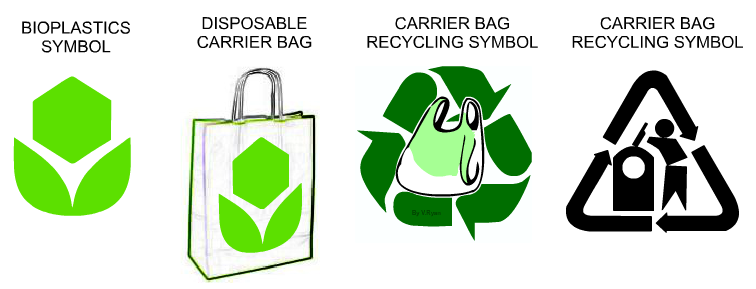| CLICK HERE FOR INDEX PAGE | |
| HOW CAN THE HARMFUL ENVIRONMENTAL EFFECTS OF PACKAGING BE REDUCED? |
|
| V. Ryan © 2011 | |
| PDF FILE - CLICK HERE FOR PRINTABLE WORKSHEET | |
|
A large amount of packaging, used to protect food products is
discarded everyday, having a harmful impact on the environment. How can
this harmful impact be reduced? Use notes and diagrams to answer this question. |
|
|
Many food manufacturers / processors, have reduced their packaging by
offering reusable and refillable containers. Branded coffee is often
supplied in this way. Refill packaging is normally manufactured from
non-polymer materials including card and paper, which can be recycled and
decays quickly. Modern packaging has been designed so that the amount of material used is minimised. Even the thickness of packaging has been reduced, cutting down the total amount needed. Supermarkets are increasingly buying products from suppliers, that use recyclable materials in their packaging, with recycling information clearly displayed for the customer. Recyclable polyethylene terephthalate (pet, pete, polyester) is one such material used in packaging. This includes assorted food containers, packaging/containers for microwave able food products, fruit containers. PET / PETE is 100% recyclable, making it ideal for packaging. It is lightweight and can be crushed / compressed, making it easy to transport to recycling plants. Most supermarkets have collection points, ensuring convenience for customers returning their empty packaging. This means that 'used' PETE packaging is recycled into new products. Therefore, it could be said that PETE is almost a sustainable material. Most supermarkets now have ‘bag free’ checkouts. Customers are not offered a plastic carrier bag at the till. In this way customers are not encouraged to use a plastic carrier bag, which means that fewer plastic bags end up being discarded as waste. Many supermarkets, offer a ‘bag for life’ or reusable bags made from sustainable materials such as cotton. Some supermarkets ask customers, if they would like to purchase a stronger bag, rather than a plastic bag. These are often made from recycled materials. The use of biodegradable polymers is growing. Polylactide (PLA), is a renewable thermoplastic and a polymer. It is ‘processed’ from the starch of plants such as corn, sugar cane and sugar beet, making it environmentally friendly and sustainable. It can be injection and blow moulded, to form disposable packaging. Polylactide is biodegradable, as it decays as a result of exposure to the ultra violet rays of sunlight and oxygen. It decomposes forming carbon dioxide and water, which present no danger to the environment. |
|
 |
|
| CLICK HERE FOR PRODUCT DESIGN INDEX PAGE | |
| CLICK HERE FOR GRAPHICS INDEX PAGE | |